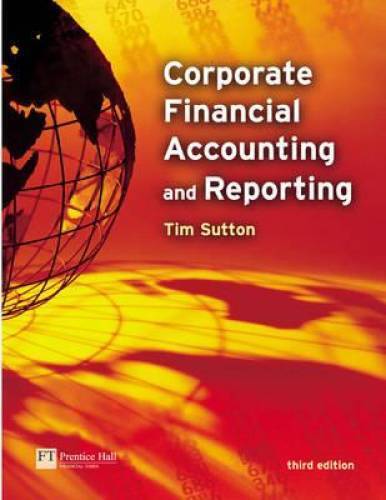The nature of goodwill During the so-called bubble years in the late 1990s, many companies in the
Question:
The nature of goodwill During the so-called bubble years in the late 1990s, many companies in the telecoms, media and technology
(TMT) sectors used their highly valued shares to acquire other companies. They accounted for the acquisitions by the purchase method in most cases. Since the acquired companies often had few tangible assets, much of the purchase price was attributed to goodwill. When share prices in the TMT sectors collapsed in 2001/02, the acquirers were forced to write down the goodwill on their acquisitions, following interim and year-end impairment reviews. The sums involved were huge in some cases.
Examples are given below.
Goodwill Goodwill write-downs Acquirer Target(s) on acquisition in 2001/02 America Online Time Warner US$128bn US$54bn JDS Uniphase SDL #
E-Tek $ US$56.5bn US$54.3bn Vivendi Canal Plus A14.1bn A11.2bn France Telecom Mobilcom A2.7bn A2.5bn Many managers argue that goodwill write-downs are bookkeeping adjustments and have little or no economic significance. According to Tony Muller, then chief financial officer of JDS Uniphase, big accounting charges like goodwill write-downs have no impact on ‘real-world issues like cash flow or the company’s bank covenants’ (Financial Times, 18 June 2001).
Required
(a) What is the economic significance, if any, of a goodwill write-down? If a write-down has no economic significance, what is the economic significance of the goodwill asset itself?
(b) Some analysts argue that a distinction should be made between acquisitions for cash and acquisitions for ‘paper’ (i.e. using the acquirer’s own shares). Goodwill write-downs represent value destruction in the former case but not in the latter. Comment on this argument. Why is it correct – or incorrect?AppenedixLO1
Step by Step Answer:






